CHAING MAI (Day 3)
In the morning, the same guy returned and put up the bunks. We arrived about 20 minutes late into Chiang Mai. We walked past all the taxis and tuktuks and headed to the main street where we caught a songthaew (pronounced song-tao which means "two rows"). This is more like a bus. You don't give a specific location (since then they could charge taxi prices) but rather just head in a general direction. We checked into a small guesthouse then headed out to see the numerous temples.
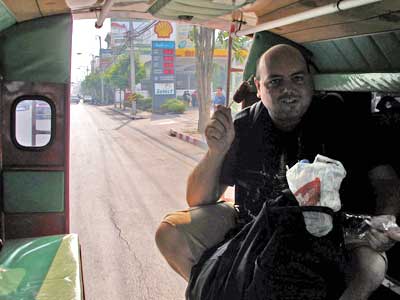
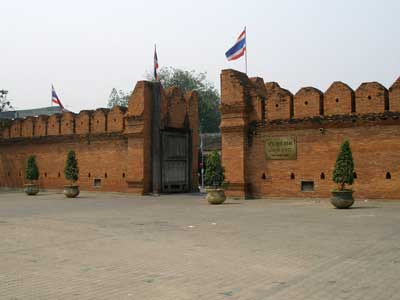
Our first temple was Wat Chedi Luang (Luang means large), started in 1391 by King Saen Muang Ma to hold the ashes of his father, Ku Na. It was expanded by later kings until 1475. At 280 feet, it was probably the largest structure in the ancient city but the top collapsed in 1545 by an earthquake. It was stabilized by a restoration project in the 1990s. It was decorated by nagas (mythical snakes) and elephants (the national symbol).
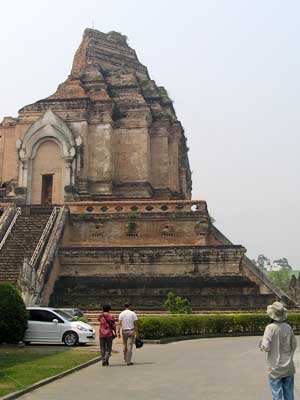
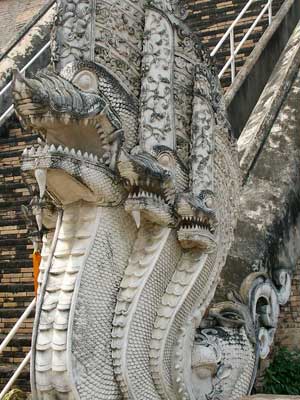
Nagas should not be confused with dragons (often in Chinese architecture).
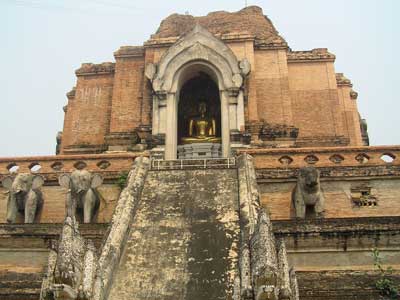
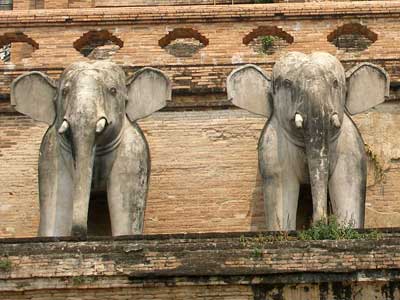
"Wat" is simply the word for temple, which may include halls, monasteries and schools. In Thai, the term may be applied to any religious center, including Buddhist monasteries, Christian churches and Muslim mosques.
A "stupa" was originally only a simple mound of clay to cover the relics of the Buddha. Now they are spiritual monuments, the symbol of Enlightenment as well as the path to its realization. Stupas are filled with sacred images, mantras and the relics of holy beings (kings, monks, etc). They later evolved into the pagoda as Buddhism spread to other Asian countries.
A "chedi" is a Thai-style Buddhist stupa. The Chedi were an early kingdom in India.
"Prangs" (tall thin towers) were common features of Khmer religious architecture and later adopted by Thai builders. They appear only with the most important religious buildings.
Thailand adopted the prang from the Khmer and the chedi from India. They have different shapes (prangs are stockier with a sort of corn cob texture, stupas are rounder with a tapered top) but essentially serve the same function.
There were several more buildings on the complex. The walkway was lined with sayings such as "Don't keep a dog and bark yourself". Inside the assembly hall was a standing Buddha and nearby was a large reclining Buddha.
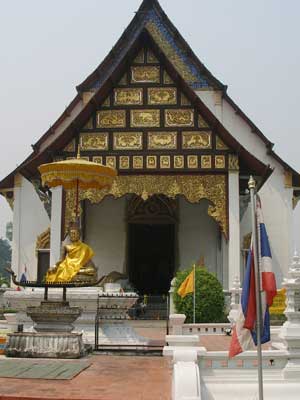
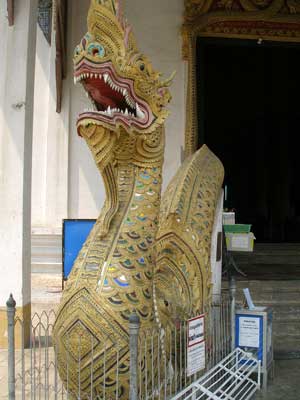
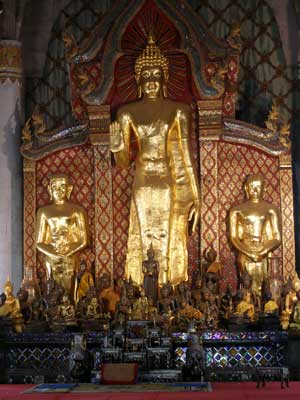
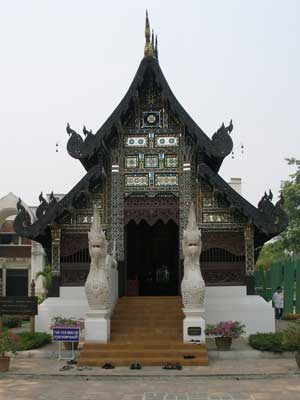
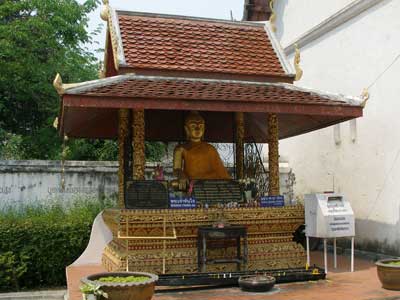
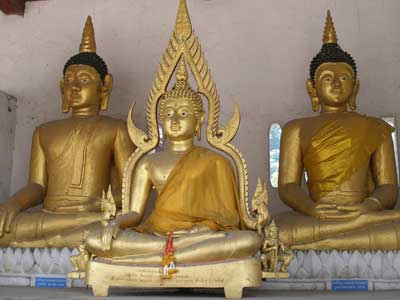
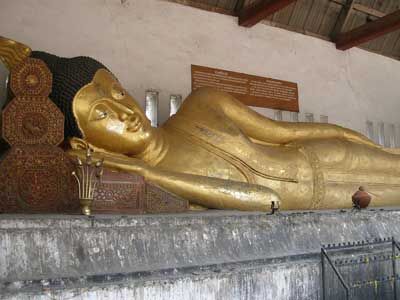
The Buddha was born into royalty around 560 BC in Nepal. His original name was Siddartha Gautama (or also Shakyamuni). After being married and having a son, he left his home at the age of 29 to devote himself entirely to spiritual practices. After a while, he realized he should not go to extremes, such as starvation, but rather that he should adopt a happy medium or middle path.
The image of the Buddha varies greatly across different countries and time, however, the rotund, jolly Chinese Laughing Buddha (Hotei or Budai) is not the same person. These types of statues began appearing in the late 800's (1200 years after Gautama's death). Odds are he is modeled after a hefty traveling Zen monk who lived in China around 850.
His various poses and hand positions are meant to convey different messages such as fearlessness, inner peace, and the spreading of knowledge. The reclining pose represents his final hours before dying and entering Nirvana (or the state of Enlightenment), after which he becomes free from the cycle of reincarnation and hence human suffering.
His elongated earlobes show his departure from materialism. Since he used to be a prince, the heavy ear rings he once wore had stretched his ears. He's usually depicted with tightly curled hair. It's unclear if this is symbolic or a representation of his actual physical features, especially since some stories describe him as having a completely shaved head. The hair knot on top of his head is called an ushnisha. Its original function was probably intended to symbolize a crown. In many cases, it is augmented by a flame or lotus flower, symbolizing his spiritual illumination. The urna is a small bump between his eyes and represents that he is all-seeing. His eyes are usually half closed, meaning he is in meditation. His lips often have a slight smile.
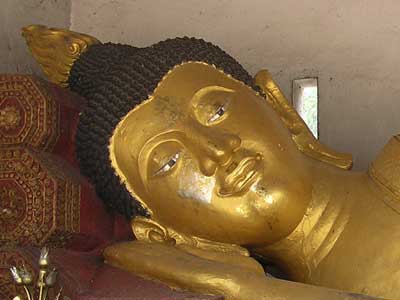
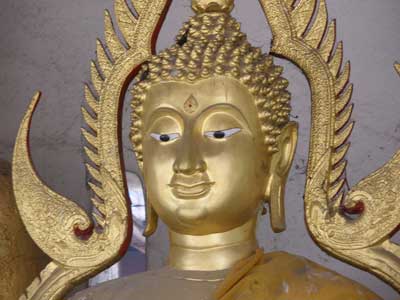
On the way out we passed Monk Chat, which encouraged tourists to talk with a monk. Right next door was a Buddhist university, hence there were lots of orange robes about.
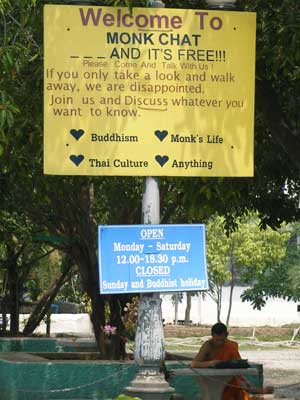
Next we visited Wat Phra Singh (singh means lion). Construction was started in 1345 by King Phayu to house the ashes of his father King Kham Fu. The whole complex underwent restorations in the 1920s and again in 2002. There was much to explore.
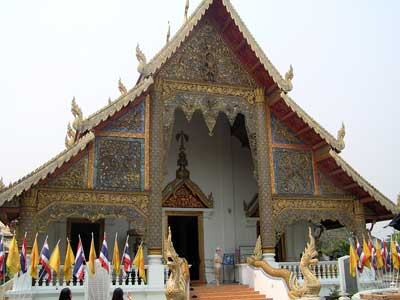
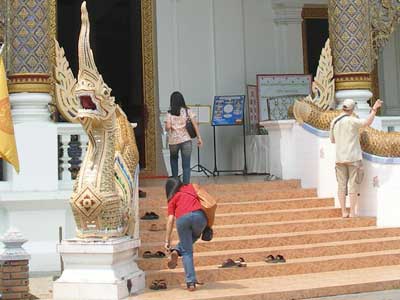
Removing one's shoes is required before entering any of the wats.
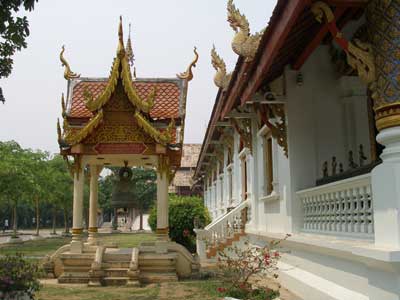
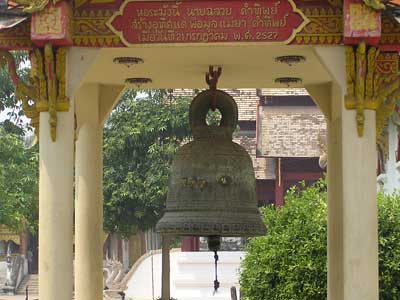
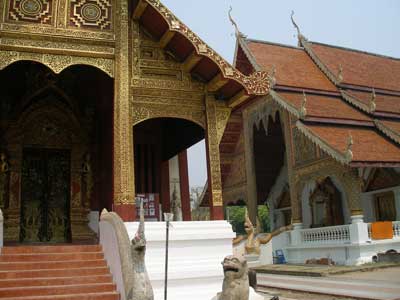

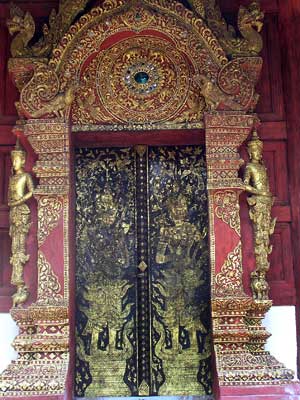
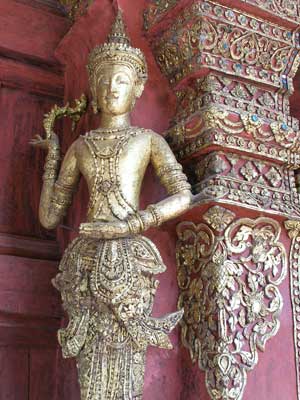
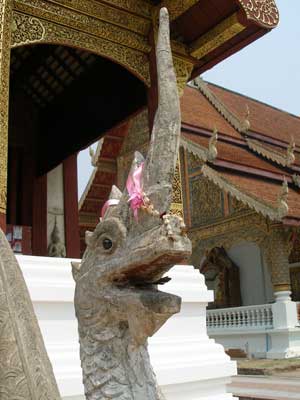
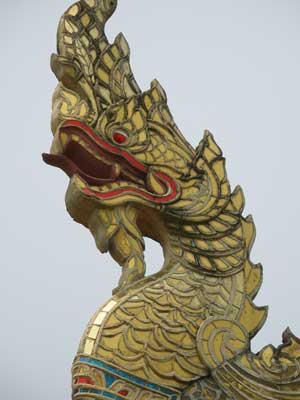
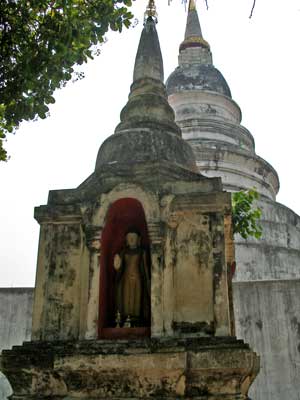
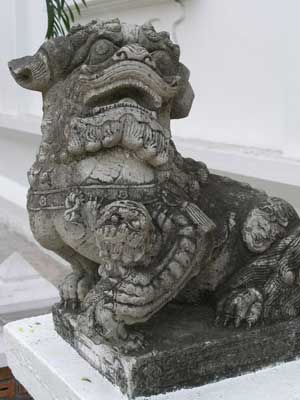
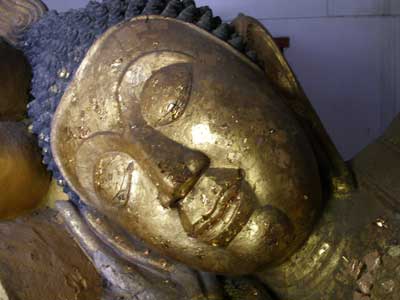
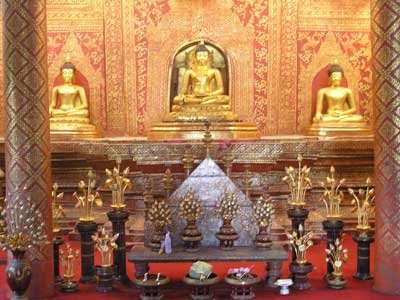
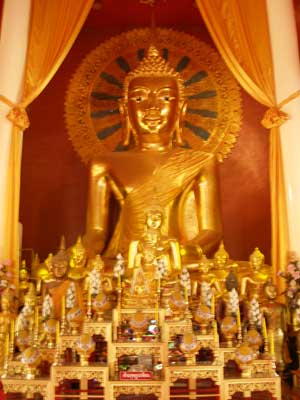
We continued on in the heat. Fortunately it wasn't too extremely humid today. Wat Hua Kuang (also known as Wat Saen Muang Ma Luang) is supposedly one of the city's older temples.

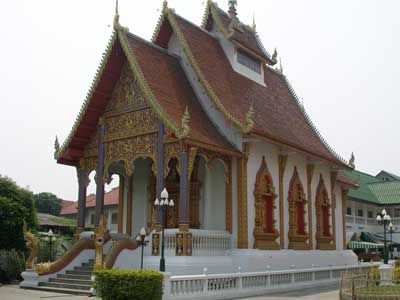

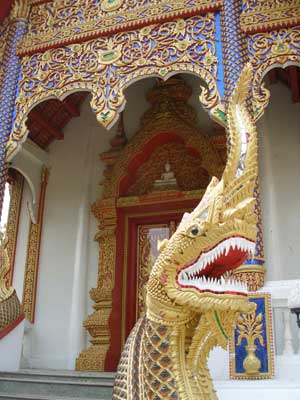
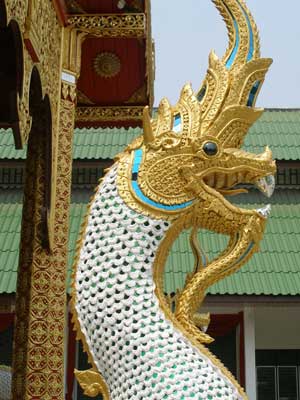
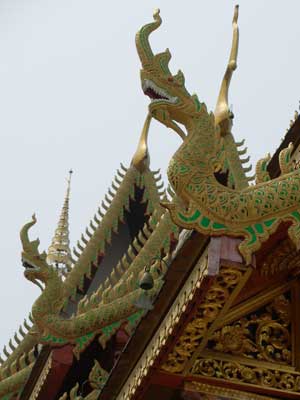
We then found Wat Chiang Mun, built in 1297. All of the temples have many different spellings on the various maps, signs and the temples themselves. Sometimes they are comprised of separate words whereas other times all the words are squished together into one.
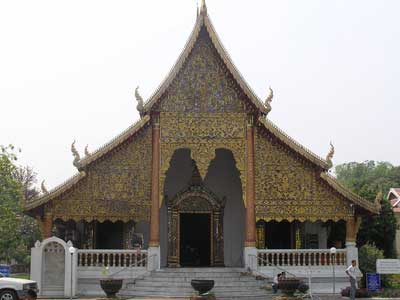
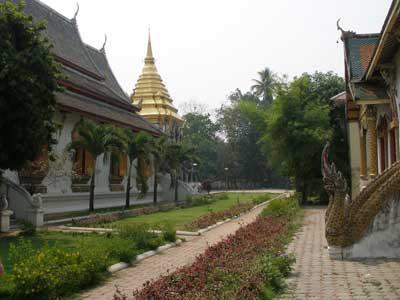
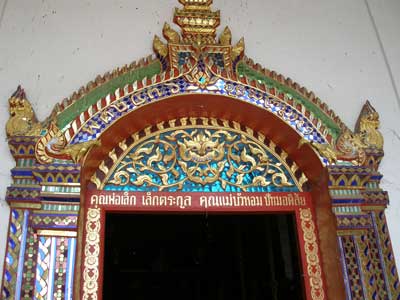
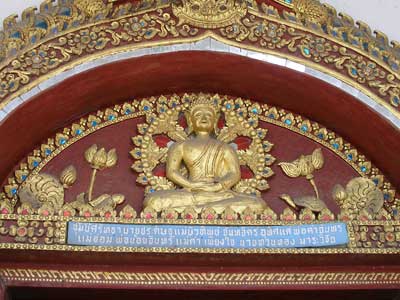
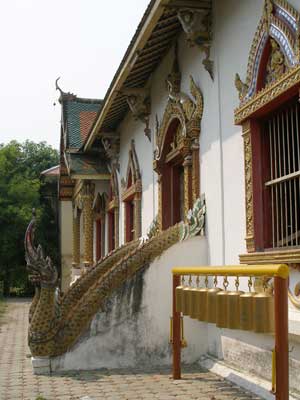
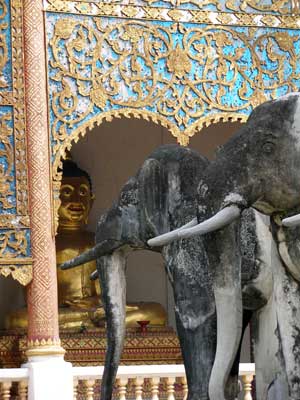
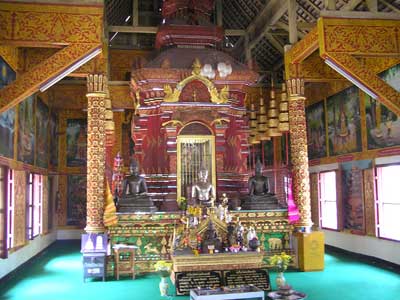
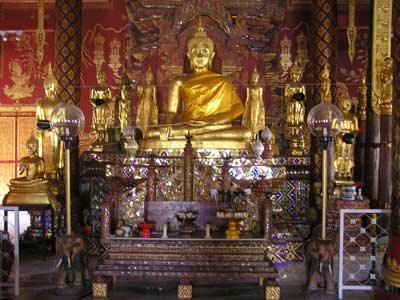
Marble... and gold Buddhas


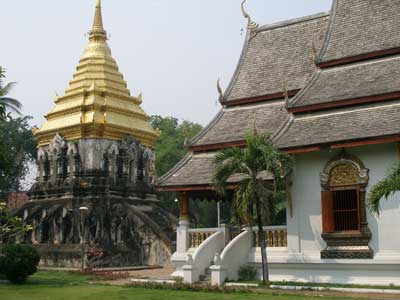
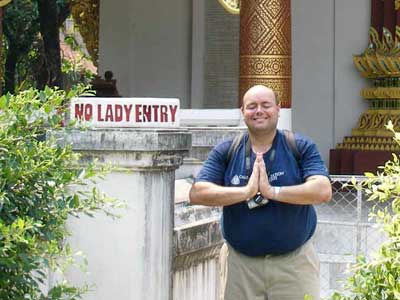
On our way back to the hotel, we stopped at Wat Mahawan.
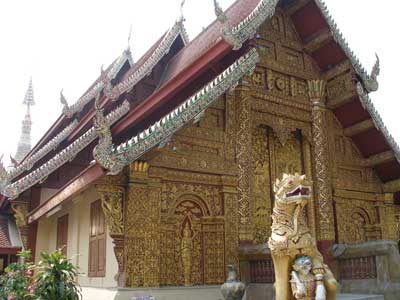

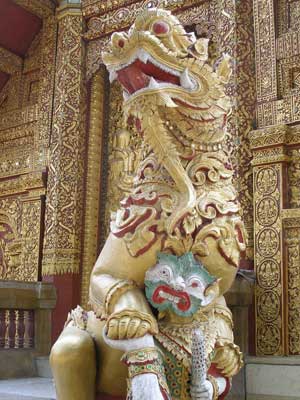
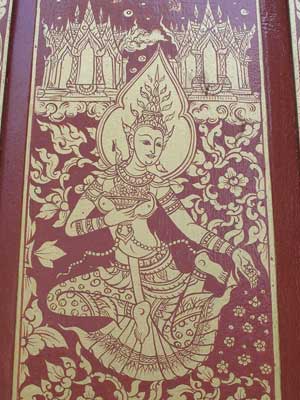
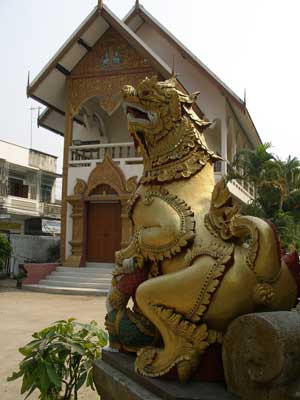
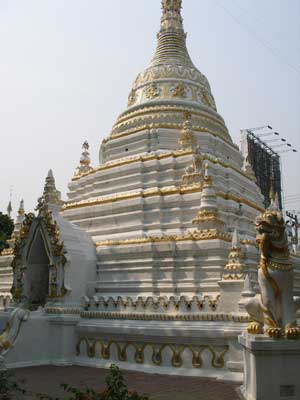
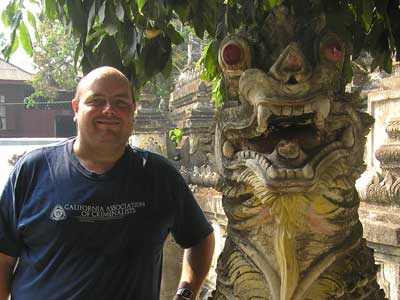
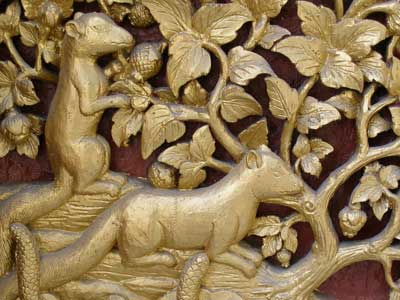
We couldn't resist one last stop at Wat Jetawan (Chetawan), with a large chedi in the back. Built from 1442- 88, it is one of city's oldest monasteries.

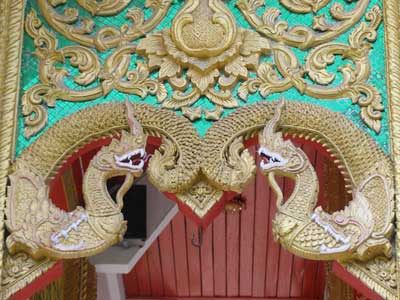
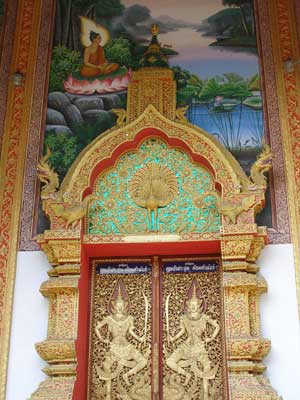
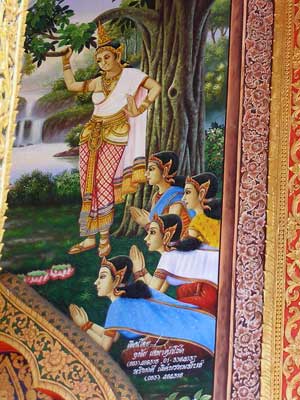
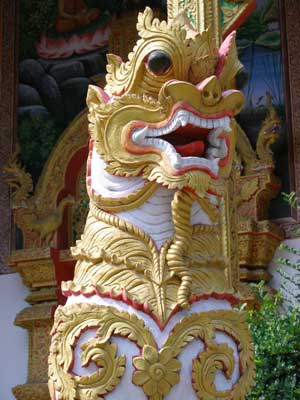
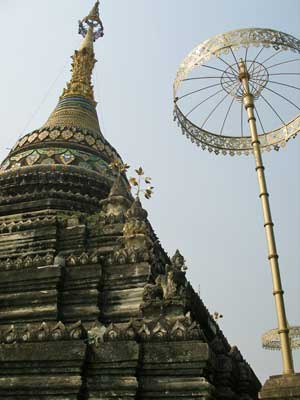
The parasol symbolizes protection. The coolness of its shade protects from the heat of suffering, desire and other spiritually harmful forces.
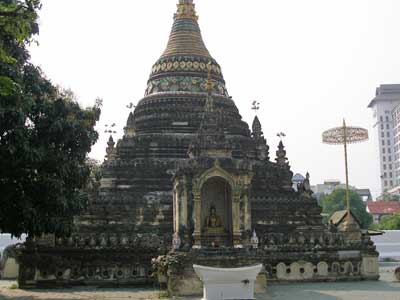

In the evening, we hit the night market a few blocks away. It was simply amazing! There were endless stalls filled with everything one could imagine... silk, jewelry, clothes, tailored suits, imitation watches, bootleg dvds, sparkly shoes, and souvenirs of all kinds. Eventually we stumbled up on a food court where people played traditional music.
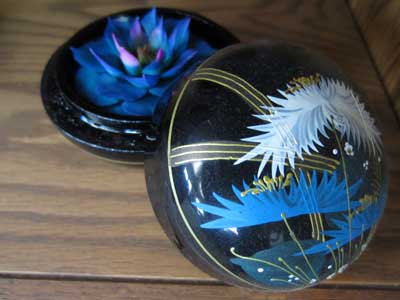
Eventually it was time to go back and face the hotel room. There was a cockroach on the floor, mosquitos in the air and ants on the bed. Other than that, it was quite lovely. People can rent these hotel rooms on a monthly basis so they're designed to be livable. The shower, like many I would come across, was simply an attachment on the wall. Frequently there were drains on the floor. It basically meant that absolutely everything in that room would get soaking wet... which I sometimes forgot an hour later when I walked back in wearing socks.
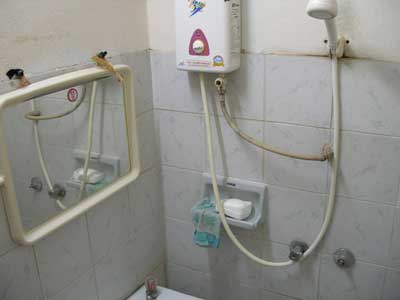
return • continue

